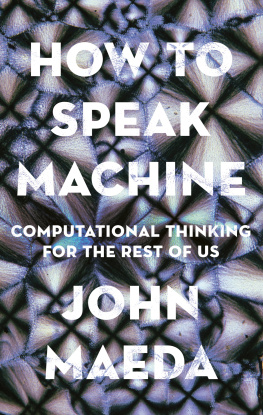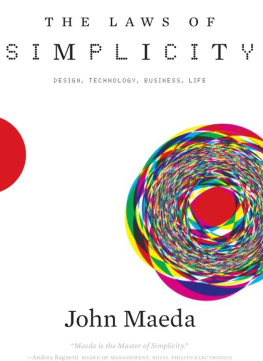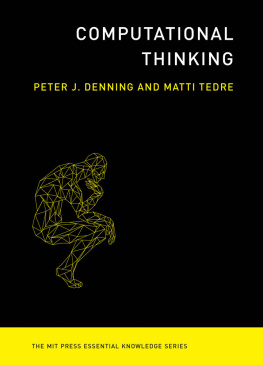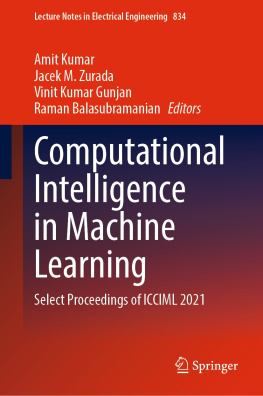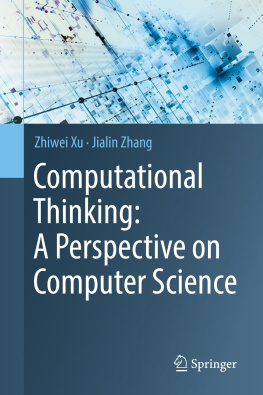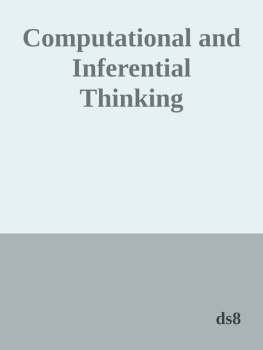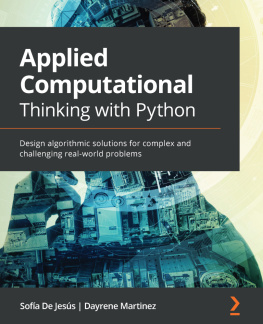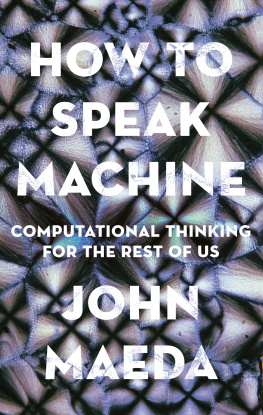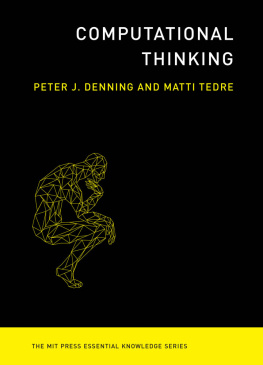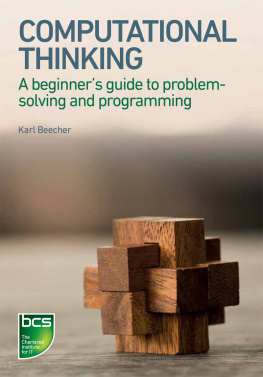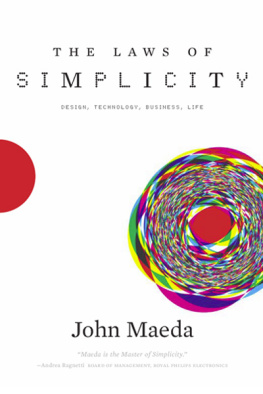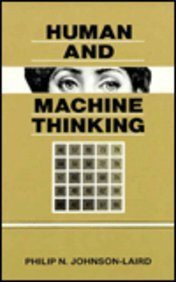John Maeda - How to Speak Machine: Computational Thinking for the Rest of Us
Here you can read online John Maeda - How to Speak Machine: Computational Thinking for the Rest of Us full text of the book (entire story) in english for free. Download pdf and epub, get meaning, cover and reviews about this ebook. year: 2019, publisher: Portfolio, genre: Romance novel. Description of the work, (preface) as well as reviews are available. Best literature library LitArk.com created for fans of good reading and offers a wide selection of genres:
Romance novel
Science fiction
Adventure
Detective
Science
History
Home and family
Prose
Art
Politics
Computer
Non-fiction
Religion
Business
Children
Humor
Choose a favorite category and find really read worthwhile books. Enjoy immersion in the world of imagination, feel the emotions of the characters or learn something new for yourself, make an fascinating discovery.
- Book:How to Speak Machine: Computational Thinking for the Rest of Us
- Author:
- Publisher:Portfolio
- Genre:
- Year:2019
- Rating:3 / 5
- Favourites:Add to favourites
- Your mark:
- 60
- 1
- 2
- 3
- 4
- 5
How to Speak Machine: Computational Thinking for the Rest of Us: summary, description and annotation
We offer to read an annotation, description, summary or preface (depends on what the author of the book "How to Speak Machine: Computational Thinking for the Rest of Us" wrote himself). If you haven't found the necessary information about the book — write in the comments, we will try to find it.
John Maeda: author's other books
Who wrote How to Speak Machine: Computational Thinking for the Rest of Us? Find out the surname, the name of the author of the book and a list of all author's works by series.
How to Speak Machine: Computational Thinking for the Rest of Us — read online for free the complete book (whole text) full work
Below is the text of the book, divided by pages. System saving the place of the last page read, allows you to conveniently read the book "How to Speak Machine: Computational Thinking for the Rest of Us" online for free, without having to search again every time where you left off. Put a bookmark, and you can go to the page where you finished reading at any time.
Font size:
Interval:
Bookmark:
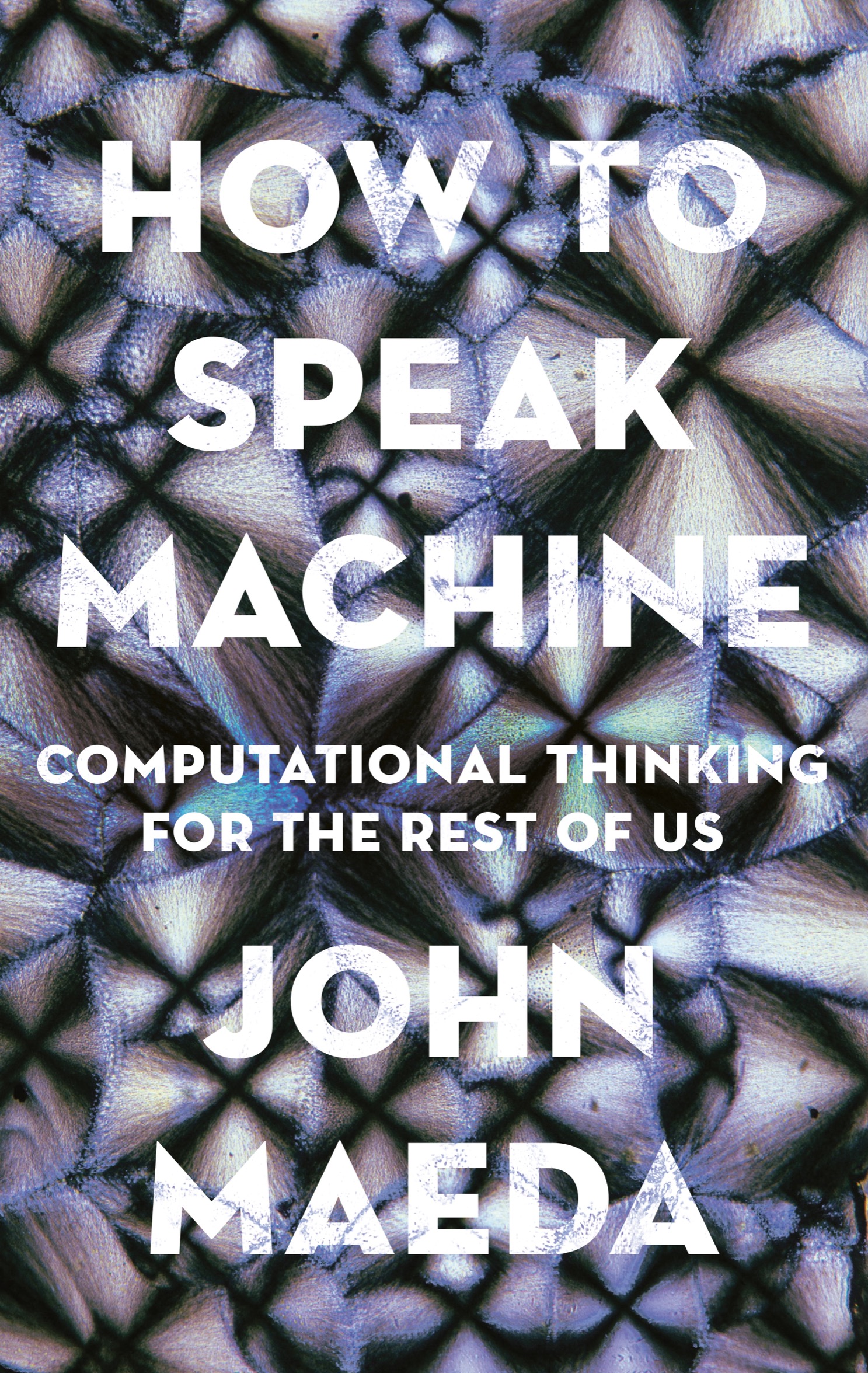
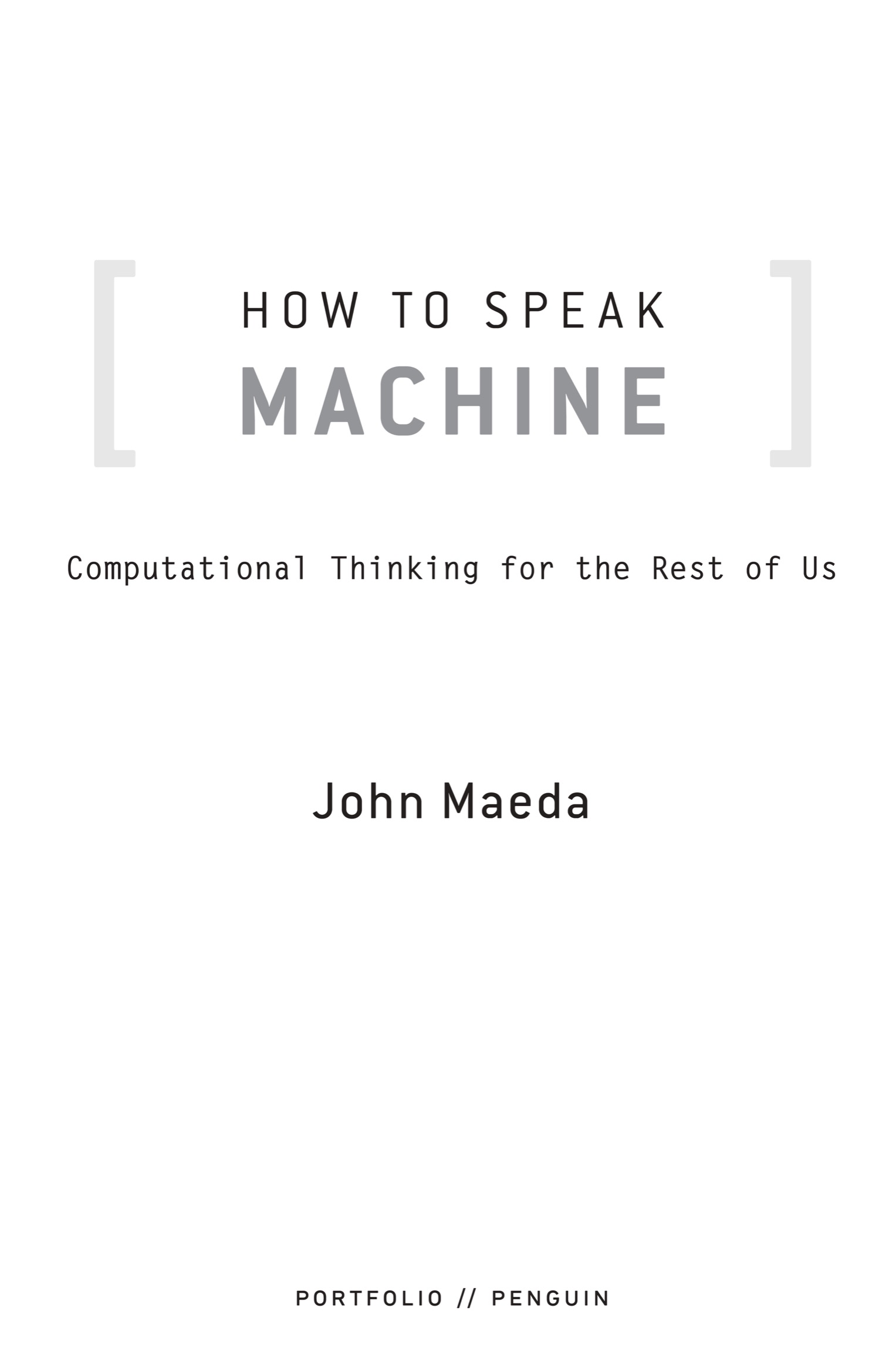

Portfolio/Penguin
An imprint of Penguin Random House LLC
penguinrandomhouse.com

Copyright 2019 by John Maeda
Penguin supports copyright. Copyright fuels creativity, encourages diverse voices, promotes free speech, and creates a vibrant culture. Thank you for buying an authorized edition of this book and for complying with copyright laws by not reproducing, scanning, or distributing any part of it in any form without permission. You are supporting writers and allowing Penguin to continue to publish books for every reader.
ISBN 9780399564420 (hardcover)
ISBN 9780399564437 (ebook)
ISBN 9780593086322 (international edition)
Library of Congress Control Number: 2019949382
Penguin is committed to publishing works of quality and integrity. In that spirit, we are proud to offer this book to our readers; however, the story, the experiences, and the words are the authors alone.
Version_2
To my mother, Elinor Yumi Maeda, who taught me how to speak human. She taught me how to treat people the way they love to be treatedin the Hawaiian way.
To my father, Yoji Maeda, who taught me how to work like a machine. He taught me how to craft products that customers love and come back forin the Japanese way.
Together they worked harder than any people I know so that I could attend any college in the world. Thanks to the two of them, I learned how to speak machine. And most importantly, thanks to Yumi, I havent forgotten how to speak human too.
It was a typical cold, snowy New England winter day on December 17, 2004, when I started a WordPress web log on the topic of simplicity. There was a whimsical motivation to turning my research at MIT in that directionnamely, how the letters MIT occurred in perfect sequence in the words SIMPLICITY and COMPLEXITY. But there was a less Dr. Seussian motivation at play as well, which I wrote about in my first blog entry:
I have always been interested in how the computer (which is an object of great complexity) and design (which is traditionally about simplicity) tend to mix poorly together like the proverbial oil and water.
Subsequently, that blog turned into a book titled The Laws of Simplicity, which was rapidly translated into fourteen languages. Why was it unusually impactful? I think because it arrived at a time when computing technology was just starting to impact everyday lives back in the pre-iPhone era. That books overwhelming momentum and the concurrent rise of Apples successful fusing of design and technology oddly drove me to head in the opposite direction of computings inherent complexities and instead toward designing for simplicity.
I wanted to somehow get closer to the essence of design and move away from computers the way I had done once prior in my early careerback in the nineties, when I was a practicing graphic designer in Japan with a mismatched MIT pedigree. Id somehow managed to escape the T (Technology) of MIT as an engineering student, and then made a U-turn into the thick of it as an MIT Media Lab professor leading the intersection of design and advanced computing technologies. Perhaps it was dealing with the weight of earning tenure that made me feel stuck somewhere in the future of design. I wanted to reconnect with the classics. I think it was a mix of not knowing what to do with the MBA Id earned as a part-time hobby and an overwhelming mood in 2008 of Barack Obamas Yes, we can, combined with my desire to rekindle the past, that resulted in my becoming the sixteenth president of the esteemed temple of the art and design world: Rhode Island School of Design, or RISD.
A series of later milestones, which built upon the work I had long led at the MIT Media Lab, gave me a reputation as a fierce defender of design. These included, for instance, appearing before Congress to encourage putting an A, for Art, in STEM education, turning it into STEAM, and later launching the Design in Tech Reports while working in Silicon Valley at venture capital firm Kleiner Perkins. So in 2019, when a popular business magazine announced in a headline that Id said, In reality, design is not that important, it did not come as a surprise to me that I would be dragged through the internet mud by all lovers of design.
There were many short- and long-form responses to the interview that cast my responses as every shade of clueless and ignorant. I knew that the controversy had hit a peak when my idol, Hartmut Esslinger, the design force behind Apples original design language, started coming after me on social media. If I had earned some sort of badge in the design world, the internet was now ruling that it was my public duty to turn that badge in, and for a period of time I would be unwelcome at any Temple of Design out there. How did I feel? Terrible.
My words had been taken out of context from a twenty-minute phone interviewand, frankly, when the article came out, I immediately admired the editorial teams choice of headline as brilliant clickbait. Apparently, my interview was the highest-performing article on their website for quite some time, as evidenced by the myriad spears and cleavers that were continuously being lobbed in my direction. What stung the most was knowing that few people had really read the entire interview, so the headline was all that stuck in anyones mind. To them, I had completely demeaned the work designers do every day. So I needed to be punished.
Heres the reality: I honestly dont believe that design is the most important matter today. Instead, I believe we should focus first on understanding computation. Because when we combine design with computation, a kind of magic results; when we combine business with computation, great financial opportunities can emerge. What is computation? Thats the question I would get asked anytime I stepped off the MIT campus when I was in my twenties and thirties, and then whenever I left any technology company I worked with in my forties and fifties.
Computation is an invisible, alien universe that is infinitely large and infinitesimally detailed. Its a kind of raw material that doesnt obey the laws of physics, and its what powers the internet at a level that far transcends the power of electricity. Its a ubiquitous medium that experienced software developers and the tech industry control to a degree that threatens the sovereignty of existing nation-states. Computation is not something you can fully grasp after training in a learn to code boot camp, where the mechanics of programming can be easily learned. Its more like a foreign country with its own culture, its own set of problems, and its own languagebut where knowing the language is not enough, let alone if you have only a minimal understanding of it.
Theres been a conscious push in all countries to promote a greater understanding of how computers and the internet work. However, by the time a technology-centered educational program is launched, it is already outdated. Thats because the pace of progress in computing hasnt moved at the speed of humansits been moving at the exponential speed of the internets evolution. Back in 1999, when a BBC interviewer made a dismissive comment about the internet, the late musician David Bowie presciently offered an alternate interpretation: Its an alien life form... and its just landed here. Since the landing of this alien life form, the world has not been the sameand design as it has conventionally been defined by the Temple of Design no longer feels to me like the foundational language of the products and services worlds. Instead, its ruled by new laws that are governed by the rising Temple of Tech in a way that intrinsically excludes folks who are less technically literate.
Font size:
Interval:
Bookmark:
Similar books «How to Speak Machine: Computational Thinking for the Rest of Us»
Look at similar books to How to Speak Machine: Computational Thinking for the Rest of Us. We have selected literature similar in name and meaning in the hope of providing readers with more options to find new, interesting, not yet read works.
Discussion, reviews of the book How to Speak Machine: Computational Thinking for the Rest of Us and just readers' own opinions. Leave your comments, write what you think about the work, its meaning or the main characters. Specify what exactly you liked and what you didn't like, and why you think so.

